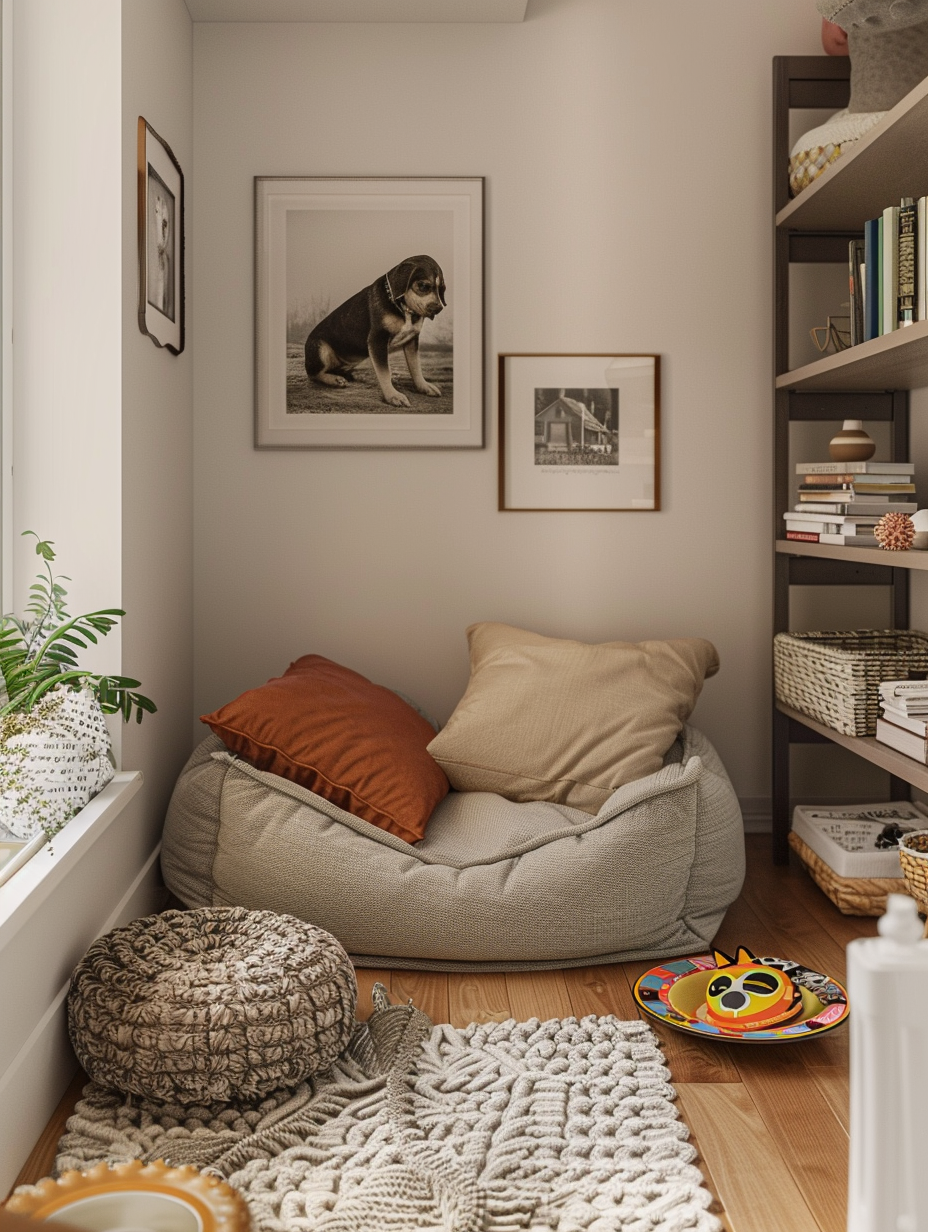Creating a pet-friendly living space ensures your home is comfortable and safe for both you and your furry friends. Follow these tips to design a space that caters to the needs of your pets.

Step 1: Choose Durable Flooring
Select flooring materials that can withstand pet traffic and are easy to clean. Options like tile, laminate, or vinyl are ideal as they are scratch-resistant and simple to maintain. For a softer option, consider rugs made from durable materials. The Gorilla Grip Original Area Rug is a great choice for a pet-friendly home.
- ULTRA SOFT AND THICK HIGH PILE SHAG: premium shag yarns and thick high pile are extra soft and...
- GRIP DOTS ON UNDERSIDE: rug features a strong backing with thousands of tiny, durable dots; perfect...
- PLUSH HIGH DENSITY FOAM INNER LAYER: designed with an additional layer of high density foam for...
Step 2: Create Designated Pet Areas
Designate specific areas for your pets to eat, sleep, and play. This helps contain messes and keeps the rest of your home tidy. Set up a cozy bed or crate in a quiet corner for your pet to rest and relax.
Step 3: Use Pet-Friendly Fabrics
Choose furniture upholstery and fabrics that are resistant to stains and claws. Look for materials like microfiber, leather, or canvas, which are durable and easy to clean. Removable and washable slipcovers are also a practical option.
Step 4: Incorporate Storage Solutions
Keep pet supplies organized with dedicated storage solutions. Baskets, bins, and cabinets can help store toys, leashes, and grooming tools. The IRIS USA 3-Drawer Storage Cart is perfect for keeping pet essentials neatly stored and easily accessible.
- MULTI-PURPOSE ORAGNIZER: Store a variety of household items that are frequently used in the office,...
- MOBILE STORAGE SOLUTION: Removable wheels are included, can be attached to the foot of the chest so...
- MADE IN USA: High-quality materials are used for our domestically-manufactured products. The sturdy...
Step 5: Provide Easy Access to Outdoors
If possible, install a pet door to give your pets easy access to the backyard. This allows them to go outside for exercise and bathroom breaks without needing your assistance. Ensure the door is secure and properly insulated.
Step 6: Use Pet-Safe Plants
Decorate with plants that are safe for pets. Some common houseplants can be toxic if ingested by animals. Research pet-safe plants or consult with your veterinarian before bringing new plants into your home.
Step 7: Create Vertical Spaces
For cats, vertical spaces like shelves or cat trees provide opportunities for climbing and exploring. These additions can help keep your feline friends entertained and physically active.
Step 8: Secure Cords and Cables
Pets, especially young ones, can chew on cords and cables, posing a safety hazard. Use cord organizers or covers to keep them out of reach and prevent accidents.

Step 9: Maintain Cleanliness
Regularly clean and vacuum your home to manage pet hair and dander. Use pet-friendly cleaning products to ensure your home stays clean without exposing your pets to harmful chemicals. A good vacuum cleaner designed for pet hair can make a big difference.




